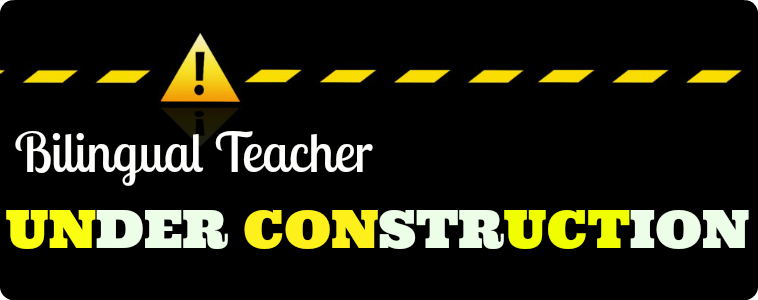Hello my
dear Bilinguals!
Today’s entry is very special and will give many meaningful activities
to work with children, not only they will work on English but also in many
intrapersonal and interpersonal skills. I am talking about drama.
For this purpose, I am going to describe some of the different
activities that we have been doing during our today’s class with scaffolding
methods and additional resources. I will focus on simple activities to prepare
the students and some others related to comprehension.
1.
Warm
up!
Working with drama and kinaesthetic skills is a great opportunity for
children to develop their self-esteem by expressing feelings or show their
hidden skills. Nevertheless, there are many children that can be afraid of
acting or simply talking in front of their peers. For this reason, if we as
teachers want to work this aspect, we have to be very carefully and organise
the lesson following a progression. That is what our teacher has done with us.
The first activity consists of having all the students walking through
an open area (the school gym or the playground would be great). The aim for
students is walking while they pretend to do an action or to be someone else.
When the teacher says FREEZE, everyone must stop and explain what is he doing
or who is he/she.
How applause makes you feel? Encourage the students to go up into a
stage or something upper than the floor for introducing themselves and say
something, whatever they want. Then, their peers will give him/her a big
applause.
2.
Comprehension
The body is powerful tool that can help students to understand better a
concept. This is true if we take into account that there are many children
whose highest intelligence is the one called Kinaesthetic Intelligence. There
are many simple activities that work on comprehension of concepts or even
stories. Let me show you some of them.
Ask for four volunteers. Two of them would be sitting in a chair
(students A) and the other two would be behind them, only showing their arms
behind the shoulders of the two first. (Students B).
It sound tricky but is that
simple as this picture shows:
Then pretend as the rest of the classmates were the audience of a TV
show, and the two volunteers that are sitting down were two popular
celebrities. At this point, the aim is to simulate and interview between the
audience and the TV Stars.
The role of the students B is to express with their own arms what the
student A is answering without seeing his face or knowing his answers.
* Scaffolding point: There are many possibilities to this activity
for working children comprehension. For instance, leaving the interview
setting, the students can have prepared the questions for the celebs beforehand
and the celebs can have prepared their role and their story. It is a good
opportunity to work with types of questions, how to make it and how to answer
it, and oral speeches.
Ask for some volunteers and you as the teacher have to give them a story
and a situation. After that, the volunteers go in front the rest of the class
and represent that final situation. The only rule for them is not to talk, they
only can make gestures. The rest of the students must guess what had happened
and how the characters have come to that end by asking questions.
*Scaffolding point: to support the comprehension, the characters
can show different real pictures or elements according to the story to help the
students finding the story. In addition, the teachers can give the students
some starting situation and from that situation, students must guess the end.
For the language scaffolding, there can be little posters on the class’ wall
that help the students to remember how to make question, for instance.
Time to
put it all in a nutshell
As you can see, there are many different ways to work with drama,
improvisation and movement and it can helpful if we want to improve skills such
as comprehension of stories or situations. Furthermore, it may be a tool for
children’s socialization as communication among them is promoted.
What do you think about working with drama in a CLIL classroom? Can you
think about more benefits for students? Can you find any negative point?
Keep tuned for more didactic resources!
And Merry Christmas my little bilinguals!


















